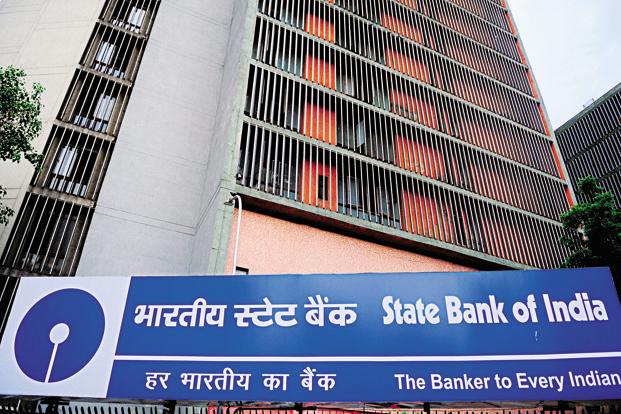State Bank Of India(SBI), the nation’s largest lender, last week cut its minimum lending rate, or base rate, by a quarter percentage point to 9.75%. This is possibly the first instance of SBI lowering its base rate since its introduction in July 2010. Till that time, the benchmark rate of all commercial banks was the prime lending rate (PLR).
The Reserve Bank of India (RBI) replaced PLR with the base rate in 2010 with an explicit understanding that no bank should give any loan below its base rate. In the PLR regime, at least 70% of the loans were given at below the prime rate. The base rate was introduced to bring in transparency in loan pricing. Banks are not allowed to give any loan below the base rate and, on top of that, they also need a rationale behind the base rate—the cost of funds and money set aside for bad assets and so on which have an impact on the cost of funds. While all new loans disbursed since July 2010 are linked to the base rate, the borrowers of old loans have the option to switch from PLR to the base rate as the benchmark rate.
To be fair, SBI as well as quite a few other banks have pared their rates in segments such as home and auto loans and loans to small and medium enterprises in the past few months. SBI is the first bank to bite the bullet and others are expected to follow suit.
Why have they been resisting paring their base rates, particularly when both the policy rate as well as the reserve requirements have been coming down?
Let’s take a closer look at what’s happening in the banking space.
In August 2008, just before the collapse of the US investment bank Lehman Brothers Holdings Inc. that plunged the world into an unprecedented credit crunch, India’s wholesale-price inflation was 6.68%. The comparable figure, in August 2012, has been 7.55%. RBI’s repo rate, or the rate at which the central bank lends short-term money to commercial banks, in August 2008 was 9%, one percentage point higher than what it is now. Similarly, banks’ cash reserve ratio (CRR), or the portion of deposits that banks need to keep with RBI, was also 9% then; now it’s half of that—4.5%. Finally, banks’ compulsory bond holding or the so-called statutory liquidity ratio (SLR) in August 2008 was 25%. It is 23% now.
Shorn of all technicalities, these mean, four years back, banks were borrowing money from RBI at a higher rate and they had less money in their kitty to lend as they were keeping double of what they are keeping now with the central bank in the form of CRR on which they don’t earn any interest. On top of that, for every Rs.100 worth of deposits, they were buying government bonds worth at least Rs.25. Now, that has come down to Rs.23.
So banks have more money in their kitty and the policy rate is lower than what it was four years back and, yet, they are not passing on the benefit to their borrowers.
In fact, for most banks, the loan rates now are much higher than what they were in 2008. For instance, SBI’s PLR was 13.75% in August 2008. Now, it is 14.5%.
After August 2011, SBI cut its PLR by a quarter percentage point on Saturday. Similarly, India’s largest private lender ICICI Bank Ltd’s PLR was 17.25% in August 2008. Now it is 18.50%.
Why aren’t the banks lowering their low rates? They cannot do so because their bad assets are growing and they need to set aside more money to take care of that.
Besides, they are also setting aside money for the statutory dues of their employees, such as pension and gratuity, which they had not done before. The impact of the combined provision on their balance sheets is quite big. On top of that, if they want to cut their loan rates, their interest income will go down, and that will affect their profitability.
Between 2008 and 2012, collective net profit of 40 listed banks have doubled—from Rs.36,987 crore to Rs.75,817 crore. But the provision of bad loan during this time almost trebled, from Rs.11,617 crore to Rs.33,982 crore.
The gross bad assets of this set of banks have gone up two-and-a-half times in the past five years (from Rs.51,196 crore to Rs.1.32 trillion) and, after setting aside money for such assets, the net bad assets have gone up 2.75 times (from Rs.22,588 crore to Rs.61,558 crore).
The figures for the 14 listed banks that constitute BSE’s banking index, Bankex, is similar—the growth in bad assets and provisions is much higher than their net profits.
Banks are also greedy. They prefer to reward their investors at the cost of their borrowers. Which is why their net interest margin (NIM)—the difference between the cost of deposits and the return on deposits—is going up. SBI’s NIM has gone up from 3.16% in September 2008 to 3.57% in June 2012. In the same period, ICICI Bank’s NIM has gone up from 2.4% to 3.01%, and that of HDFC Bank Ltd, from 4.2% to 4.3%.
NIM in absolute term doesn’t illustrate a bank’s greed as a predominantly retail bank will always have a higher NIM as retail loans earn more and, at the same time, carry higher risk, whereas corporate loans earn less and the risk is also lower. And, hence, a predominantly corporate bank will have a relatively lower NIM.
Irrespective of the profile of Indian banks, the fact remains that their NIMs are on the rise. The only way they can lower their loan rates without compromising their profitability is through higher operational efficiency.



